Anděra, Miloš.1999. České názvy živočichů II. Savci (Mammalia). Prague: Národní muzeum, (zoologické odd.).
Arnold, Michael L. 2008. Reticulate Evolution and Humans: Origins and Ecology. Oxford University Press.
Bisby, F.A.; Roskov, Y.R.; Orrell, T.M.; Nicolson, D.; Paglinawan, L.E.; Bailly, N.; Kirk, P.M.; Bourgoin, T.; Baillargeon, G.; Ouvrard, D. (red.). 2011. “Genetta poensis Waterhouse, 1838.” Species 2000 & ITIS Catalogue of Life: 2011 Annual Checklist. Reading, UK. Retrieved May 30, 2014.
- Available at: http://www.catalogueoflife.org/col/search/all/key/Genetta+poensis
Boelens, Bo; Watkins, Michael; and Grayson, Michael. 2009. The Eponym Dictionary of Mammals. Johns Hopkins University.
Boschi, Giovanni. 1863 - 1879. Atlante Zoologico Popolare. Naples: Raimondo Petroroja.
Bosman, Willem. 1704. Beschrijving van de Guinese Goud-Kust. Tweede deel. Utrecht: Anthony Schouten.
- Available via Biodiversity Heritage Library at: http://biodiversitylibrary.org/page/39650033
Boudet, Ch. 10 January 2009. "Species Sheet: King Genet, Blotched Genet, Small-spotted Genet." Mammals' Planet: Vs n°4, 04/2010. Retrieved May 30, 2014.
- Available at: http://www.planet-mammiferes.org/drupal/en/node/38?indice=Genetta+poensis
Cassell's Universal Portrait Gallery: A Collection of Portraits of Celebrities, English and Foreign. With Facsimile Autographs. 1895. London, Paris & Melbourne: Cassell and Company, Limited.
- Available via Internet Archive at: https://archive.org/details/cassellsuniversa00londiala
Coetzee, C.G. 22 August 1977. “Order Carnivora.” Pp. 1-42 in 1971-1977. The Mammals of Africa: An Identification Manual. Part 8 edited by J. Meester and H.W. Setzer. Washington, D.C.: Smithsonian Institution Press.
Corson, Docteur P.-J. October 2005. Les grands prédateurs d’Afrique: biologie, éthnologie et chasse. Brussels, Belgium: Éditions du Gerfaut.
Crawford-Cabral, J. 1981. “A New Classification of the Genets.” African Small Mammal Newsletter 6:8-10.
Crawford-Cabral, João. 1980. "The Classification of the Genets (Carnivora, Viverridae, genus Genetta)." Boletim da Sociedade Portuguesa de Ciências Naturais 20:97-114.
de Pousarges, E. (Eugène). 1896. "Étude sur les mammifères du Congo français." Annales des Sciences Naturelles, Zoologie et Paléontologie; comprenant l'Anatomie, la Physiologie, la Classification et l'histoire Naturelle des Animaux, (série 8, tome troisième): 129-416.
- Available via Biodiversity Heritage Library at: http://biodiversitylibrary.org/page/35662106
- Available via Internet Archive at: http://archive.org/stream/udesurlesmammifs00pous#page/n6/mode/1up
Driver, Stephanie (ed.). 2008. Exploring Mammals, Volume 3. Tarrytown, NY: Marshall Cavendish Corporation.
Duff, Andrew; and Lawson, Ann. 2004. Mammals of the World: A Checklist. Yale University Press.
Ewer, R.F. 1998. The Carnivores. Cornell University Press: Cornell Paperbacks.
Gaubert, P. 2003. Systématique et phylogénie du genre Genetta et des énigmatiques "genet-like taxa" Prionodon, Poiana et Osbornictis (Carnivora, Viverridae): caractérisation de la sous-famille des Viverrinae et étude des patrons de diversification au sein du continent africain. Ph.D. Thesis, Muséum National d'Histoire Naturelle.
Gaubert, Philippe; and Dufour, Sylvain. July 2013. “First Report of a Chinchilla Phenotype in Viverridae (Carnivora).” Small Carnivore Conservation 48:92-95. Retrieved May 30, 2014.
- Available at: http://www.smallcarnivoreconservation.org/home/wp-content/uploads/2013/08/SCC-48-11-Gaubert-Dufour.pdf
Gaubert, P.; and Dunham, A. 2008. "Genetta poensis." In: IUCN 2013. International Union for Conservation of Nature and Natural Resources Red List of Threatened Species. Version 2013.2. Retrieved May 30, 2014.
- Available at: http://www.iucnredlist.org/details/full/136435/0
Gaubert, P.; Chalubert, A.; and Dubus, G. 2008. “An Interactive Identification Key for Genets and Oyans (Carnivora, Viverridae, Genettinae, Genetta spp. and Poiana spp.) Using Xper2.” Zootaxa 1717:39-50.
Gaubert, P.; Fernandes, C. A.; Bruford, M. W.; and Veron, G. 2004. "Genets (Carnivora, Viverridae) in Africa: An Evolutionary Synthesis Based on Cytochrome b Sequences and Morphological Characters." Biological Journal of the Linnean Society 81:589-610.
Gaubert, P.; Papeş, M.; Peterson, A.T. June 2006. "Natural History Collections and the Conservation of Poorly Known Taxa: Ecological Niche Modeling in Central African Rainforest Genets (Genetta spp.)." Biological Conservation 130(1):106–117.
Gaubert, P.; Taylor, P.J.; and Veron, G. 2005. “Integrative Taxonomy and Phylogenetic Systematics of the Genets (Carnivora, Viverridae, Genetta): A New Classification of the Most Speciose Carnivoran Genus in Africa.” Pp. 371-384 in African Biodiversity: Molecules, Organisms, Ecosystems edited by Bernard A. Huber, Bradley J. Sinclair, and Karl-Heinz Lampe. NY: Springer Science + Business Media, Inc.
Gaubert, Philippe; Weltz, Marjorie; and Chalubert, Antoine. 14 January 2008. “Genetta poensis." Genets and Oyans. Paris: Université Pierre et Marie Curie. Retrieved May 30, 2014.
- Available at: http://lis-upmc.snv.jussieu.fr/genettes/web/fiches_en/taxa/genetta_poensis.html
"Genet." AWF: What We Do > Wildlife Conservation > Genet. African Wildlife Foundation. Retrieved May 30, 2014.
- Available at: http://www.awf.org/wildlife-conservation/genet
“Genetta poensis.” The Marine Biological Universal Biological Indexer and Organizer. Retrieved May 30, 2014.
- Available at: http://www.ubio.org/browser/details.php?namebankID=5542843
“Genetta poensis.” The National Center for Biotechnology Information: Taxonomy ID235207. Retrieved May 30, 2014.
- Available at: http://www.ncbi.nlm.nih.gov/Taxonomy/Browser/wwwtax.cgi
“Genetta poensis Waterhouse, 1838.” ITIS Report: Taxonomic Serial Number 726262. Integrated Taxonomic Information System. Retrieved May 30, 2014.
- Available at: http://www.itis.gov/servlet/SingleRpt/SingleRpt?search_topic=TSN&search_value=726262
“Genetta poensis: King Genet.” Encyclopedia of Life. Retrieved May 30, 2014.
- Available at: http://eol.org/pages/1053879/details
"Genetta poensis (King Genet)." ZipcodeZoo: Species Identifier 4179404. Retrieved May 30, 2014.
- Available at: http://zipcodezoo.com/animals/g/genetta_poensis/
Gervais, Paul. 1855. Histoire naturelle des Mammifères: Carnivores, Proboscidiens, Jumentés, Bisulques, Édentés, Marsupiaux, Monotrèmes, Phoques, Sirénides et Cétacés. Paris: L. Curmer.
Gittleman, John L.; Funk, Stephan M.; Macdonald, David; and Wayne, Robert K. (eds.). 2001. Carnivore Conservation. Cambridge University Press: Conservation Biology 5.
The Global Biodiversity Information Facility. 2014. "Genetta poensis Waterhouse, 1838." GBIF Backbone Taxonomy: GBIF 119862146. Retrieved May 30, 2014.
- Available at: http://www.gbif.org/species/119862146
Hayssen, Virginia; Van Tienhoven, Ari; and Van Tienoven, Ans. Asdell’s Patterns of Mammalian Reproduction: A Compendium of Species-Specific Data. Cornell University, 1993.
Hunter, Luke; and Barrett, Priscilla. 2011. A Field Guide to the Carnivores of the World. London, Cape Town, Sydney, Auckland: New Holland Publishers (UK) Ltd.
Jennings, A. P.; and Veron, J. 2009. "Family Viverridae (Civets, Genets, and Oyans)." In: Don E. Wilson and Russel Mittermeier (Hrsg.) Handbook of the Mammals of the World Volume 1: Carnivores. Lynx Edicions.
Jukofsky, Diane for the Rainforest Alliance. 2002. Encyclopedia of Rainforests. Westport, CT: Oryx Press.
Kingdon, Jonathon; Happold, David; Butynski, Thomas; Hoffmann, Michael; Happold, Meredith; and Jan Kalina (eds.). 2013. Mammals of Africa, Volume 5: Carnivores, Pangolins, Equids and Rhinoceroses, edited by Jonathan Kingdon and Michael Hoffmann. Bloomsbury Publishing.
Kondo, H.; Tesar, J.; Cloud, D.; Kagan, L. (eds.). 1972. Civets, Genets, and Linsangs, Volume 2, 3rd Edition. Milan: Fratelli Fabbri Editori.
Larivière, Serge. 2004. "Civets, Genets, and Linsangs." Pp. 335-339 in Grzimek's Animal Life Encyclopedia, Second Edition. Volume 14: Mammals III, edited by Michael Hutchins, Devra G. Kleiman, Valerius Geist, and Melissa C. McDade. Farmington Hills, MI: Gale Group, Inc., division of Thomson Learning Inc.
Lesson, R.-P. 1842. Nouveau Tableau du Règne Animal: Mammifères. Paris: Arthus Bertrand.
Myers, P.; Espinosa, R.; Parr, C.S.; Jones, T.; Hammond, G.S.; and Dewey, T.A. 2014. “Genetta poensis: King Genet.” The Animal Diversity Web (online). University of Michigan Museum of Zoology. Retrieved May 30, 2014.
- Available at: http://animaldiversity.ummz.umich.edu/accounts/Genetta_poensis/classification/
Nowak, Ronald M. 1999. Walker's Mammals of the World, Sixth Edition. Volume I. Baltimore: Johns Hopkins University Press.
Pocock, R. I. (Reginald Innes). 1907. "Report upon a Small Collection of Mammalia brought from Liberia by Mr. Leonard Leighton." Proceedings of the General Meetings for Scientific Business of the Zoological Society of London, 1907, pp. 447-1121 (May-December): 1037-1046.
- Available via Biodiversity Heritage Library at: http://biodiversitylibrary.org/page/31579509
Pucheran, M. le Docteur. 1858. “Documents Relatifs à la Mammalogie du Gabon.” Archives du Muséum d’Histoire Naturelle Publiées par les Professeurs-Administrateurs de cet Établissement. Tome X. LIV I – II:103-135.
Rosevear, Donovan Reginald. 1974. The Carnivores of West Africa. London: Trustees of the British Museum (Natural History).
- Available via Biodiversity Heritage Library at: http://www.biodiversitylibrary.org/item/35416#page/7/mode/1up
Temminck, C. J. (Coenraad Jacob). 1853. "Viverrin Berbé ou Genettoide. Viverra Genettoides." Esquisses zoologiques sur la côte de Guiné. 1e partie, les Mammifères. Leiden: C.J. Brill.
- Available via Biodiversity Heritage Library at: http://biodiversitylibrary.org/page/14835836
- Available via Internet Archive at: https://archive.org/stream/esquisseszoologi00temm#page/89/mode/1up
Veron, Geraldine. 2010. “Phylogeny of the Viverridae and ‘Viverrid-like’ Feliforms.” Pp. 64-90 in Carnivoran Evolution: New Views on Phylogeny, Form and Function edited by Anjali Goswami and Anthony Friscia. Cambridge University Press: Cambridge Studies in Morphology and Molecules.
Waterhouse, George Robert. 1838. "Genetta poensis." Proceedings of the Zoological Society of London, Part VI (May 8, 1838):59-60.
- Available via Biodiversity Heritage Library at: http://biodiversitylibrary.org/page/30571116
Wilson, Don E.; and Cole, F. Russell. 2000. Common Names of Mammals of the World. Washington, D.C.: Smithsonian Institution Press.
Wilson, Don E.; and Reeder, DeeAnn M. (editors). 2005. Mammal Species of the World: A Taxonomic and Geographic Reference (3rd ed), Johns Hopkins University Press.
Wrobel, Murray (Editor). 2007. Elsevier's Dictionary of Mammals: Latin English German French Italian. Oxford, U.K.: Elsevier B.V.


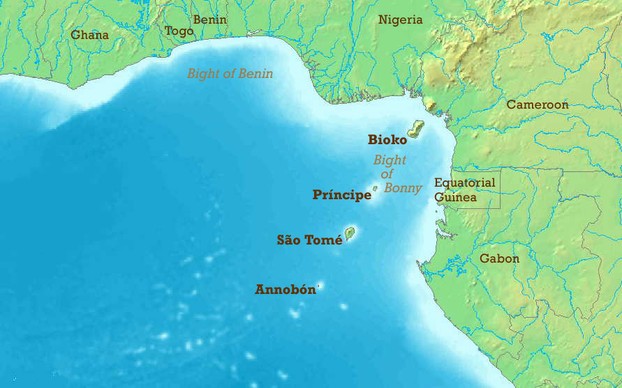
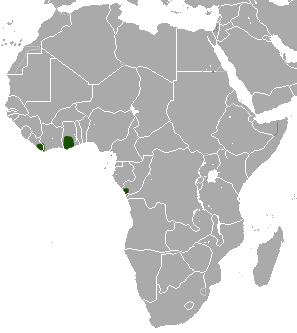
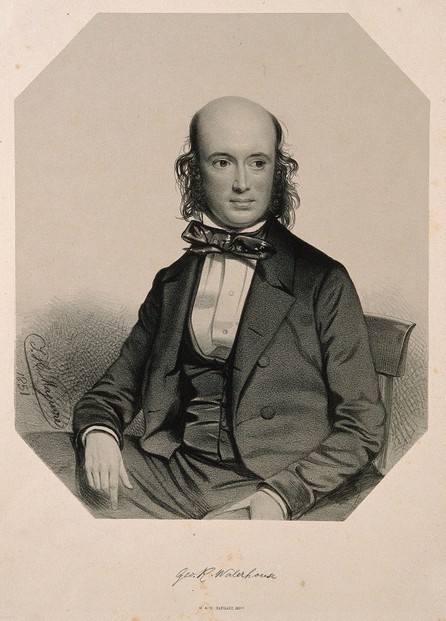

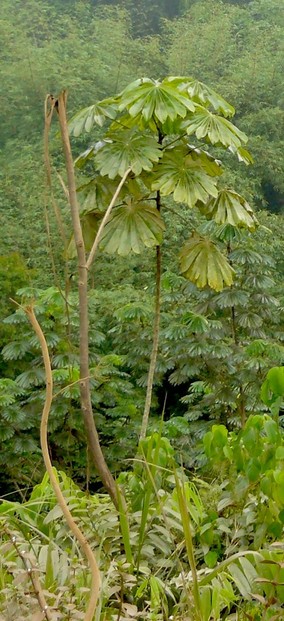
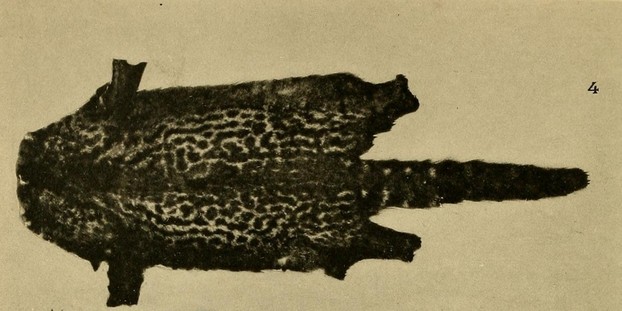
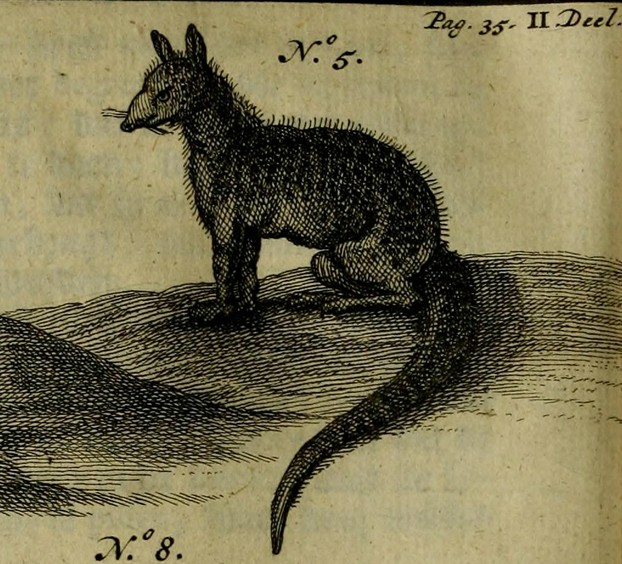
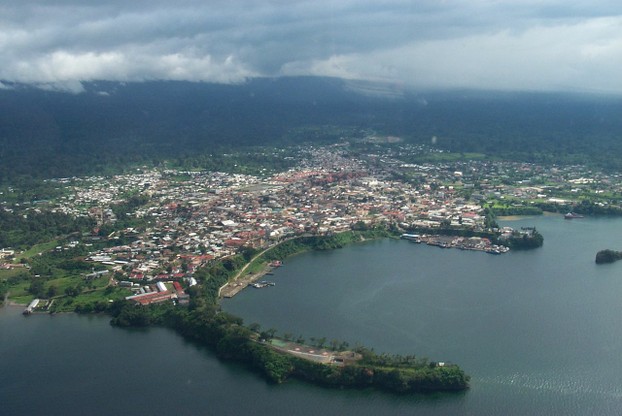

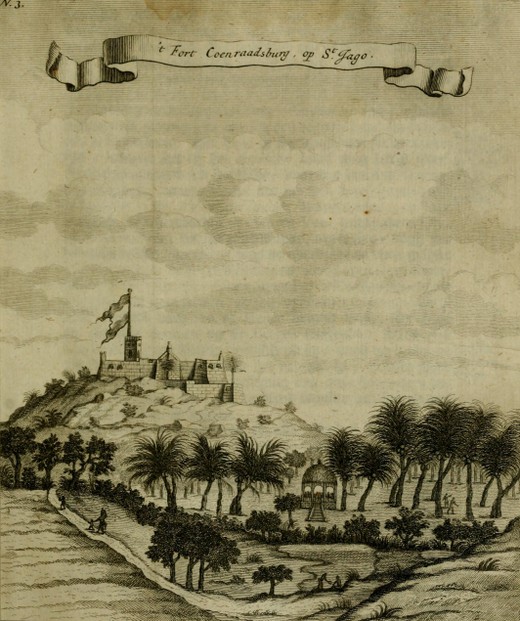
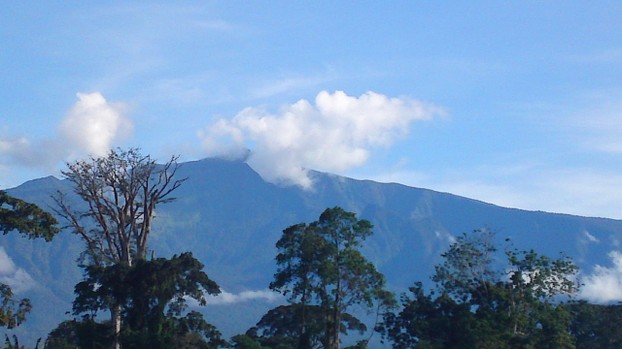



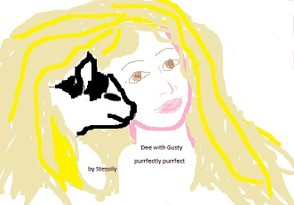
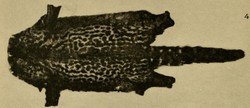

 Are Hawaiian Huakai Po Nightmarchers Avenging Halloween Thursday?on 10/02/2024
Are Hawaiian Huakai Po Nightmarchers Avenging Halloween Thursday?on 10/02/2024
 Mailing Addresses for 2023 Form 4868 Extending 1040 and 1040SR April 15, 2024, Due Dateon 04/15/2024
Mailing Addresses for 2023 Form 4868 Extending 1040 and 1040SR April 15, 2024, Due Dateon 04/15/2024
 Mailing Addresses for 2023 Forms 1040 and 1040SR Filed in 2024on 04/15/2024
Mailing Addresses for 2023 Forms 1040 and 1040SR Filed in 2024on 04/15/2024
 Mailing Addresses for 2022 Form 4868 Extending 1040 and 1040SR April 18, 2023, Due Dateon 04/13/2023
Mailing Addresses for 2022 Form 4868 Extending 1040 and 1040SR April 18, 2023, Due Dateon 04/13/2023

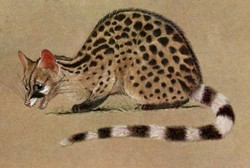
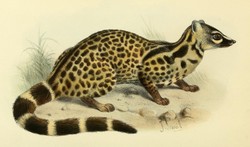
Comments
VioletteRose, You're welcome. I'm happy to spotlight genets.
Mira, No easily accessible source explains why the king genet is so-called. The original Waterhouse description -- which I've read in its entirety -- is silent as to the reason for the common name. I must agree with you that the king genet seems very different from all the other non-aquatic genets. This puts me in the realm of speculation but the formal Waterhouse identification impresses me with the leonine-like background color and the regal implications that I interpret in the description and therefore make me think of lion, "king of beasts."
Great information and excellent pictures, thanks for sharing!
I see their tail is almost black. Very different from other genets, where the lines are very clear (and more beautiful). Why is this one called the king genet, do you know? I was expecting a "king" genet to be more representative of genets in general. This one is probably the most different!